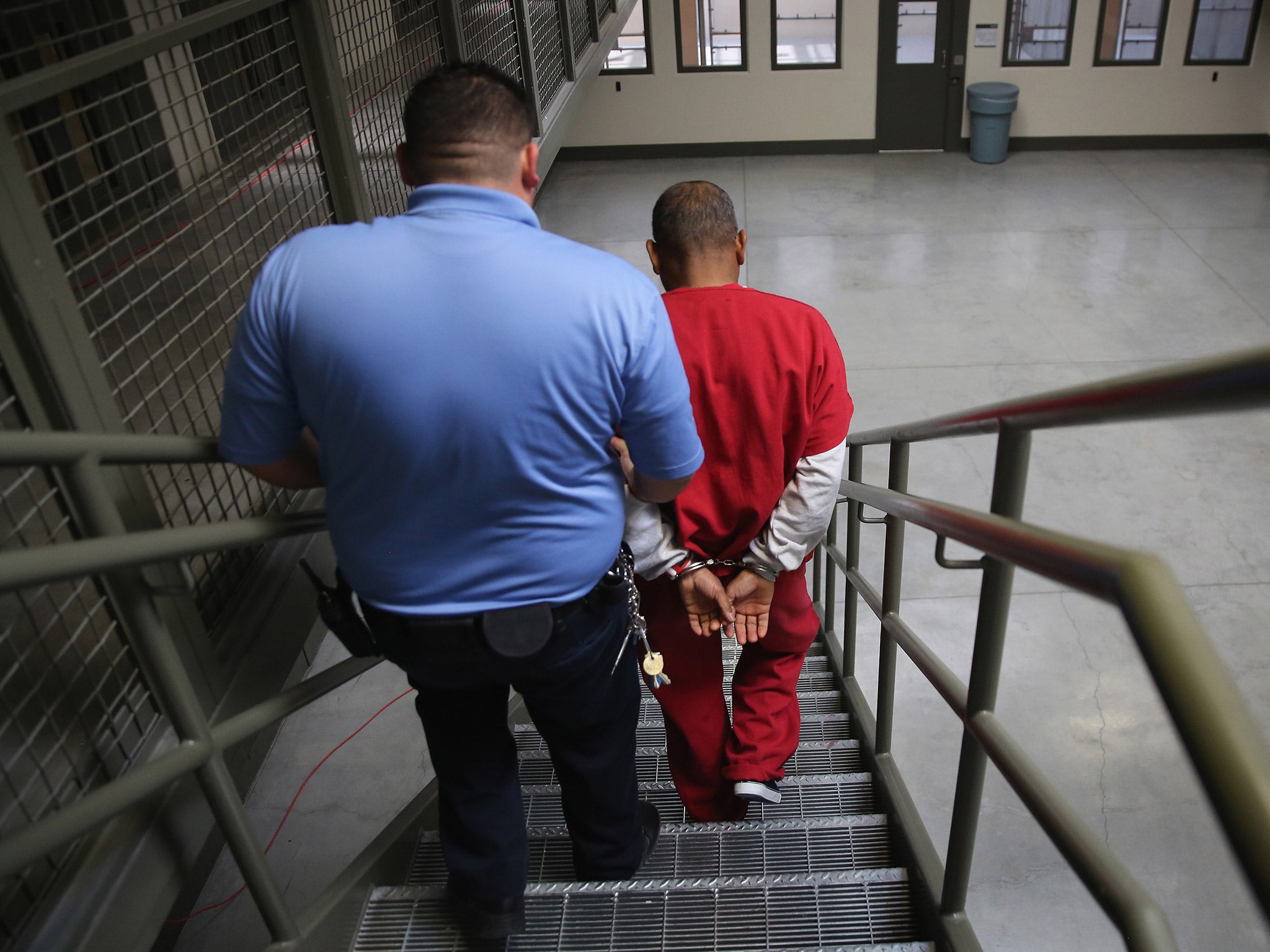California prisons to end unlimited solitary confinement for gang members
Deal will see almost 2,000 inmates, some isolated for decades, released into general prison populations

Almost 2,000 California prison inmates in solitary confinement, some for decades, are to be released into general prison populations in a landmark settlement.
The legal ruling will end the controversial use of indefinite solitary confinement to control prison gangs. It follows several widespread hunger strikes protesting against the practice, which critics say can cause severe psychological effects, including a heightened suicide risk. Inmates in solitary spend up to 23 hours a day in their cells, most of which have no windows. They are separated from family visitors by glass and their rare phone calls are restricted.
California has housed more prisoners in solitary for long periods than any other state, according to the Centre for Constitutional Rights, the New York-based advocacy group that argued the case on prisoners’ behalf. It is also among the few states to isolate inmates on the basis of gang affiliation, not behaviour. Prisoners can be placed in solitary simply for having certain tattoos.
The settlement reached between inmates and the state on Tuesday will limit solitary confinement to prisoners who commit serious offences while behind bars. Inmates thought too dangerous to re-enter the general population will be housed in high-security units that allow group activity and outside contact.
The lawsuit was filed in 2009 by Todd Ashker and Danny Troxell, inmates at Pelican Bay State Prison, who were isolated due to their alleged affiliation with the Aryan Brotherhood. Both men denied being active members of the gang. Ashker helped to lead a series of statewide hunger strikes, one involving 30,000 inmates.
Dolores Canales of California Families Against Solitary Confinement (CFASC), whose son Johnny has spent 14 years in isolation, said: “Everywhere you go in California there are commercials about happy cows, cage-free eggs and humane standards – and yet our prisons are dehumanising. People have imprisoned loved ones who haven’t felt human contact or seen natural sunlight in decades. I’m hoping that by Christmas, I’ll be able to hug my son.”
Solitary confinement has recently become a subject of national debate, particularly since the June suicide of Kalief Browder, 22. Sent to New York’s Rikers Island jail aged 16, accused of stealing a backpack, Browder had spent three years imprisoned without trial, two in isolation.

In July, President Barack Obama ordered a Justice Department review into the “overuse” of solitary confinement in federal prisons. Juan Mendez, a UN human rights monitor who examined Pelican Bay’s solitary wing, said the practice constituted “torture or cruel, inhumane or degrading treatment or punishment”.
The state’s correctional officers union opposed the settlement, claiming that releasing dangerous inmates from isolation could lead to a rise in prison violence. Speaking to reporters on Tuesday, California Corrections Department chief Jeffrey Beard said that in past decades “there was a lot of violence in the system”, which led to the increased use of solitary. But, he added, “we don’t believe it’s good for anybody to keep them locked up for 10, 20, 30 years”.
The state has already moved more than 1,000 prisoners out of solitary confinement over the past two years, after they demonstrated no involvement in gangs. This week, about 2,850 California inmates were reported to be in isolation. Under the settlement, that number is set to fall to 1,000 in the coming months.
The prisoner who spent longest in solitary was Hugo Pinelli, released into the general jail population at California State Prison-Sacramento this month after 43 years in isolation, only to be killed in a prison riot days later.
Join our commenting forum
Join thought-provoking conversations, follow other Independent readers and see their replies
Comments